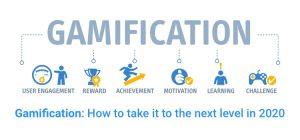How Technology helps us to learn different languages
1402-05-14 1404-05-11 14:18How Technology helps us to learn different languages
(ویژه سومین کنفرانس چند زبانههای ایران )
Abstract

Learning a new language is a rewarding but challenging experience. Fortunately, technology has revolutionized language learning, making it more accessible and convenient than ever before. In this article, we explore how technology can help us learn different languages, from language-learning apps to online language exchange programs. We also examine the benefits of technology-assisted language learning and review recent research on the effectiveness of these tools. Overall, we find that technology can be a powerful tool for language learning, helping learners to improve their vocabulary, grammar, pronunciation, and cultural knowledge.
Introductions
Language learning has traditionally been a time-consuming and challenging process, requiring learners to invest significant effort and resources to achieve proficiency. However, with the rapid advancement of technology, language learning has become more accessible and convenient than ever before From language learning apps to online language exchange programs, technology has revolutionized language learning and opened up new opportunities for languages. learners around the world.
One of he most significant benefits of technology-assisted language learning is its accessibility. With language learning apps, learners can access language lessons and exercises anytime, anywhere, using their smartphones or tablets. This flexibility allows learners to fit language learning into their busy schedules and makes it easier to maintain consistency in their language-learning efforts.
Additionally, online language exchange programs provide learners with the opportunity to practice their speaking and listening skills with native speakers from around the world, without the need for expensive travel or language classes.
Another key benefit of technology-assisted language learning is its effectiveness. Recent research has shown that language learning apps and online language exchange programs can be highly effective tools for improving language skills. For example, a study published in the Journal of Educational Psychology found that language learning apps can significantly improve vocabulary knowledge and reading comprehension in learners of all ages (Wang et al., 2020). Another study published in the Journal of Computer-Assisted Learning found that online language exchange programs can be an effective way to improve speaking and listening skills in language learners (Lai & Zhao, 2020).
In addition to improving language skills, technology-assisted language learning can also help learners acquire cultural knowledge and develop intercultural competence. Language learning apps and online language exchange programs often include cultural content, such as videos, articles, and podcasts, that help learners understand the cultural context of the language they are learning. This can be particularly important for learners who plan to use their language skills in a professional or academic context, where intercultural competence is highly valued.
Language Learning Apps

Language learning apps are mobile applications designed to help learners acquire new language skills. These apps offer a variety of features, such as interactive lessons, vocabulary drills, and language games, that help learners improve their reading, writing, speaking, and listening skills. Some popular language learning apps include Duolingo, Babbel, and Rosetta Stone.
One of the main benefits of language learning apps is their convenience Learners can access these apps anytime, anywhere, using their smartphones or tablets, making it easy to fit language learning into their daily routines. Additionally, language-learning apps often use gamification and other interactive features to make language learning fun and engaging, helping learners stay motivated and committed to their language-learning goals.
Online Language Exchange Programs
Online language exchange programs are online platforms that connect language learners with native speakers of the language they are learning. These programs typically involve language learners and native speakers pairing up to practice their speaking and listening skills, with each partner taking turns speaking in their respective languages. Some popular online language exchange programs include Tandem, Hello Talk, and iTalki.
One of the main benefits of online language exchange programs is the opportunity they provide for learners to practice their speaking and listening skills with native speakers. This can be particularly valuable for learners who do not have access to native speakers in their local communities. Additionally, online language exchange programs can be a cost-effective alternative to traditional language classes or immersion programs, making language learning more accessible to learners with limited resources.
Virtual Reality

Virtual reality (VR) is a technology that creates immersive, simulated environments. In language learning, VR can be used to create simulations of real-life scenarios, such as ordering food at a restaurant or navigating a city, that help learners practice their language skills in a realistic context. Some language learning companies, such as Mondly and ImmerseMe, offer VR language learning
programs. One of the main benefits of VR language learning is its ability to create immersive, realistic language learning environments. This can help learners to develop their speaking and listening skills in a more natural and authentic way. Additionally, VR language learning can be particularly useful for learners who are preparing to travel or work in a foreign country, as it can help them develop the language skills and cultural knowledge they need to succeed in these contexts.
In summary, technology has revolutionized language learning, making it more accessible, convenient, and effective than ever before. From language learning apps to online language exchange programs to virtual reality, there is a wide variety of tools and resources available to help learners acquire new language skills. By taking advantage of these tools and resources, learners can achieve proficiency in a new language and enjoy the many benefits of being multilingual.
Artificial Intelligence
Artificial intelligence (AI) is a technology that uses algorithms and machine learning to simulate human intelligence. In language learning, Al can be used to provide personalized feedback and create customized lesson plans based on learners’ individual needs and learning styles. Some language learning companies such as Lingvist and Memrise, use Al to create personalized language learning experiences.
One of the main benefits of Al-powered language learning is its ability to provide personalized feedback and create customized lesson plans. This can help learners to focus on their individual strengths and weaknesses and to progress at their own pace, Additionally, Al-powered language learning can be particularly useful for learners who have specific language learning goals or who are preparing for language proficiency exams, as it can help them to identify areas for improvement and track their progress over time.
Gamification

Gamification is the use of game design elements, such as points, badges, and leaderboards, in non-game contexts. In language learning, gamification can be used to make language learning more engaging and enjoyable, motivating learners to continue practicing and improving their language skills. Some language learning apps, such as Duolingo and Babbel, use gamification to make language learning more fun and interactive.
One of the main benefits of gamification in language learning is its ability to motivate learners to continue practicing and improving their language skills. By incorporating game design elements into language learning, learners can develop a sense of achievement and progress, which can help them stay motivated and committed to their language learning goals.
Additionally, gamification can help learners develop their language skills in a more natural and authentic way, as it simulates real-life language use and encourages learners to engage with the language in a meaningful way.
Social Media
Social media platforms, such as Facebook, Twitter, and Instagram, can also be used as tools for language learning. Language learners can use social media to connect with other learners and native speakers of the language they are learning and to access language learning resources, such as language learning groups and language exchange programs. Additionally, social media can be a valuable source of authentic language input, allowing learners to engage with the language in a real-world context.
One of the main benefits of using social media for language learning is its ability to connect learners with other learners and native speakers of the language they are learning. This can provide learners with valuable opportunities for practice and feedback and can help them to develop their speaking and listening skills in a real-world context. Additionally, social media can be a cost-effective and convenient alternative to traditional language classes or immersion programs, making language learning more accessible to learners with limited resources.
In summary, technology has transformed language learning, providing learners with a wide variety of tools and resources to help them acquire new language skills. From artificial intelligence to gamification to social media, there are many ways in which technology can be used to make language learning more effective, engaging, and accessible. By taking advantage of these tools and resources, learners can achieve proficiency in a new language and enjoy the many benefits of being multilingual.
Speech Recognition

Speech recognition technology is a type of technology that uses machine learning and artificial intelligence to recognize and interpret human speech. In language learning, speech recognition technology can be used to provide learners with feedback on their pronunciation and speaking skills. Some language learning apps. such as Babbel and Rosetta Stone, use speech recognition technology to help learners improve their speaking skillsOne of the main benefits of speech recognition technology in language learning is its ability to provide learners with feedback on their pronunciation and speaking skills. By analyzing learners’ spoken language, speech recognition technology can identify areas for improvement and provide learners with specific feedback on how to improve their pronunciation and speaking skills. Additionally, speech recognition technology can help learners develop their speaking skills in a more natural and authentic way, as it simulates real-life language use and encourages learners to engage with the language in a meaningful way.
Online Language Learning Communities
Online language learning communities are online platforms where language learners can connect with each other and share resources, such as language learning tips, practice exercises, and language exchange programs. Some popular online language learning communities include Reddit’s language learning subreddit, the Polyglot Club, and the Fluent in 3 Months forum.
One of the main benefits of online language learning communities is their ability to connect learners with other learners and native speakers of the language they are learning. This can provide learners with valuable opportunities for practice and feedback and can help them to develop their speaking and listening skills in a real-world context. Additionally, online language learning communities can be a valuable source of motivation and inspiration, as learners can connect with others who share their language learning goals and challenges.
Adaptive Learning
Adaptive learning is a type of technology that uses machine learning and artificial intelligence to create customized learning experiences for individual learners. In language learning, adaptive learning can be used to create personalized lesson plans and provide learners with feedback on their progress. Some language learning companies, such as Busuu and Memrise, use adaptive learning technology to create personalized language learning experiences.
One of the main benefits of adaptive learning in language learning is its ability to provide learners with personalized feedback and customized lesson plans. By analyzing learners’ performance data, adaptive learning technology can identify areas for improvement and create customized lesson plans that target learners’ individual strengths and weaknesses. Additionally, adaptive learning technology can help learners progress at their own pace, which can be particularly useful for learners who have limited time or who are balancing language learning with other commitments.
In summary, technology has revolutionized language learning, providing learners with a wide variety of tools and resources to help them acquire new language skills. From speech recognition to online language learning communities to adaptive learning, there are many ways in which technology can be used to make language learning more effective, engaging, and accessible. By taking advantage of these tools and resources, learners can achieve proficiency in a new language and enjoy the many benefits of being multilingual.
Results
Overall, technology can be a powerful tool for language learning, offering learners access to a wide range of resources and opportunities for practice. Language learning apps and online language exchange programs are convenient, effective, and accessible, making it easier than ever for learners to achieve proficiency in a new language. Additionally, these tools can help learners develop intercultural competence, improving their ability to communicate and work effectively with people from different cultural backgrounds.
BY: Melika Jahangiri
References
Lai, C., & Zhao, Y. (2020). Language exchange program and its impact on learners’ speaking and listening performance. Journal of Computer Assisted Learning, 36(4), 417-427.
Wang, Y., Sun, Y., & Liu, D. (2020). The effectiveness of mobile app-supported vocabulary learning: A meta-analysis. Journal of Educational Psychology, 112(3), 430-451.

